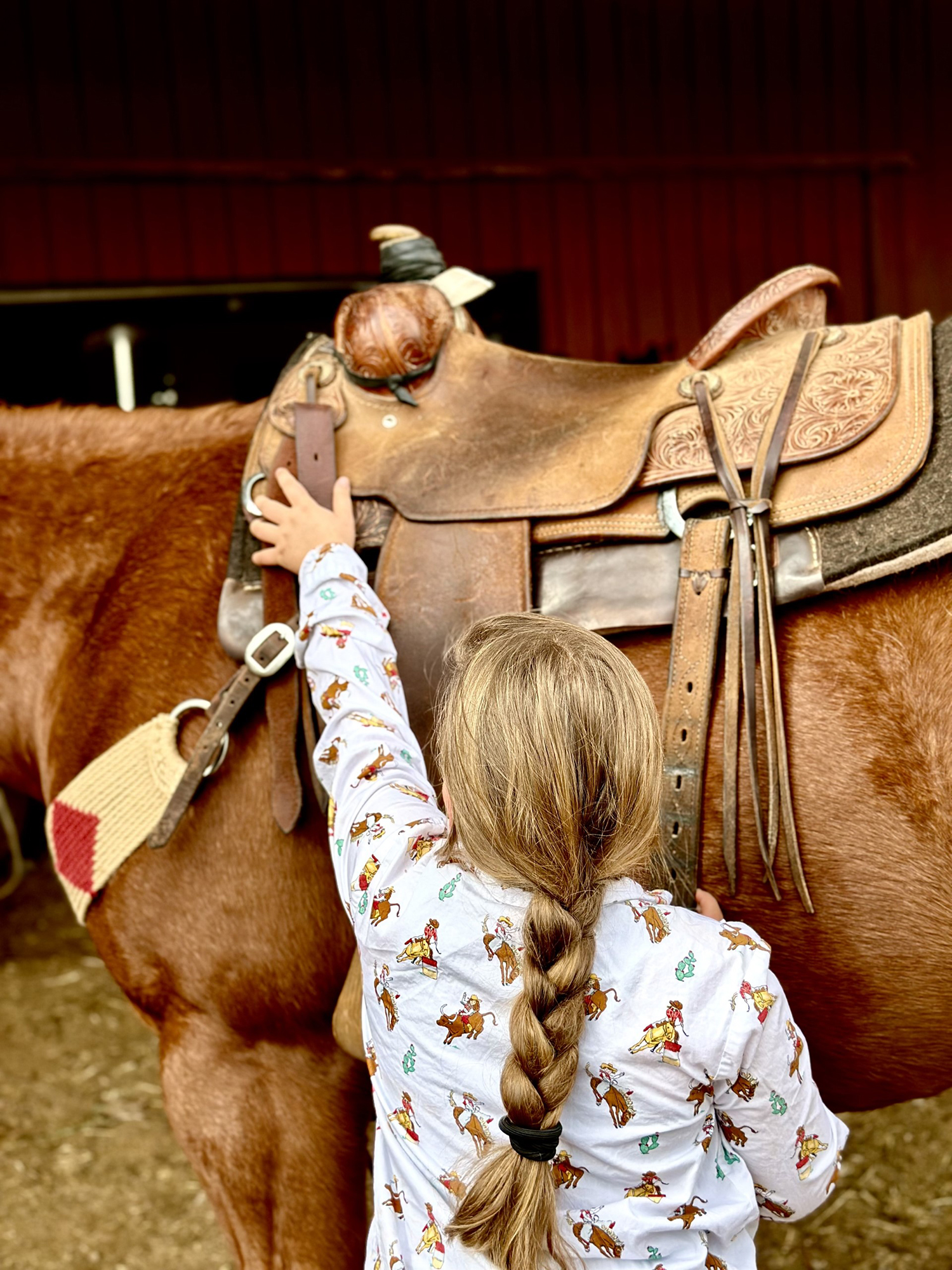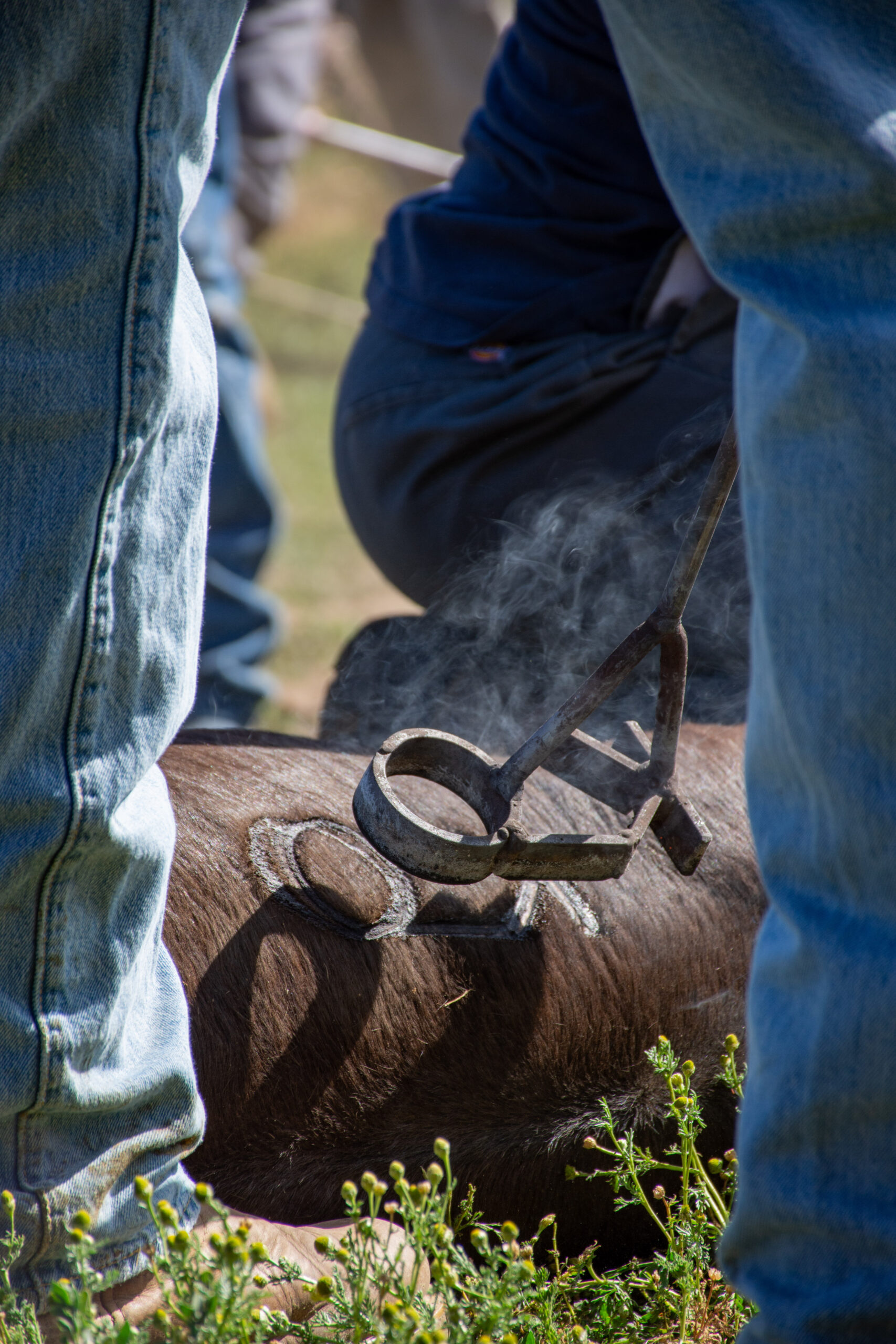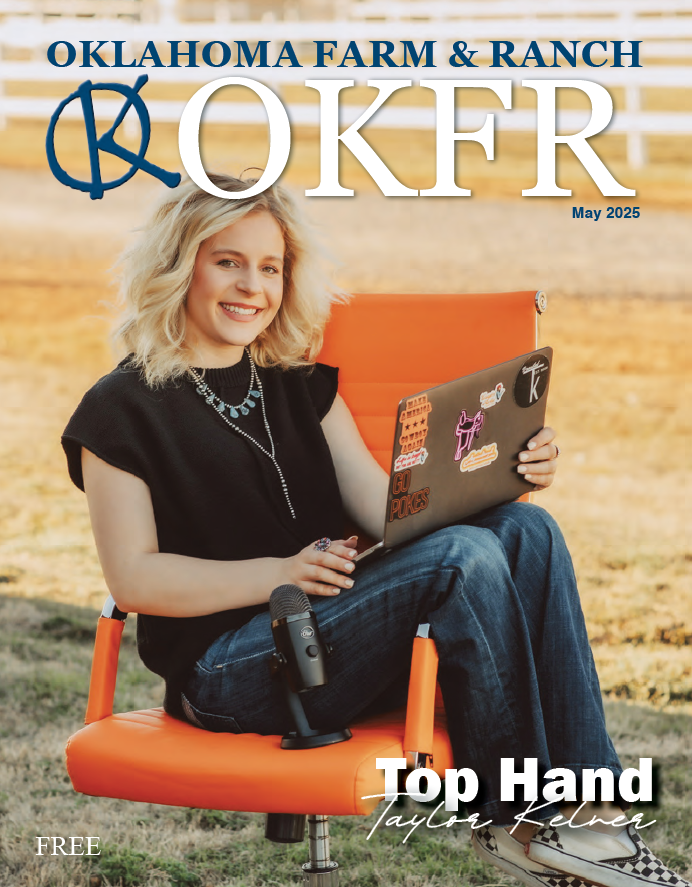Country Lifestyle
Western Housewives – April 2024

I am a mother. I do not know about the rest of you mothers, but the second I became “Mom,” my life became a constant state of wondering if I am doing a good job.
That is especially hard to tell when you choose to homeschool. I have no feedback from anyone that is not family. No teacher conferences telling me the little girl talks too much or the oldest boy can not sit still. Sure, I could ask my husband how he thinks our kids are maturing emotionally and intellectually. Still, he would most likely look out the window and see the aforementioned children running around in the sand with only socks on. He would then look at me and ask me to make him a quesadilla. I would say yes, we would joke about socks, and life would go on. See? Zero feedback to go on here.
So, you start to rely on personal experiences. You come up with little tests throughout your days to rate your kids “ready for society” level.
Example 1: A trip to the big city where the kids treat the grocery store as their personal snack depot. They successfully eat all the grapes and a whole block of cheese in your basket before you can check out. As you leave, they tell the door greeter, “Have a nice day.”
Example 2: Your husband enters an indoor rodeo. You are bouncing the baby and notice your oldest child is eating a bag of dippin dots. First, you smile and then remember that she has no money. Come to think of it, the concession stand is not even open. You have now concluded your firstborn has broken into the closed concession stand with her posse of four-year-old convicts and has helped herself to some ice cream.
Example 3: You are in church. The children have managed to be nice and quiet the entire time. After the message and the closing “Amen” is said, your three-year-old turns to you and says, “Well, that wasn’t so bad.”
After a little while, you start to question your “Ready for Society” tests. Are they productive? Are they accurate? I figure the answer to that question is better left unanswered.
One evening this summer, after I had quit conducting all these tests, I was mourning the loss of my children’s place in society when I looked up and noticed all our horses running down our driveway, headed for the neighboring pastures. For a minute, I just sat there wondering what I should do. I was holding the baby and wearing the ever-practical slip-on loafer and had absolutely no idea what was for supper. That had nothing to do with the horses being out, but that is part of being a housewife, I guess. You always wonder if you left the iron on and what is for supper.
While I sat there stunned, pondering life’s biggest questions, my husband and my daughter yelled at me to get a move on as they were already springing into action. My husband ran to stop them, and my daughter was on her way to the barn for some halters. Meanwhile, I was tripping over my loafers, scaring the horses and making already stressful matters much worse.
My husband finally got the horses cornered at the far end of our neighbor’s pasture and waved at me for some assistance. I handed the baby to my daughter and told her to watch the boys and stay in the house while I headed to help.
Within 30 minutes, we caught the horses and led them back to the corrals. I was in a near state of panic, wondering how long the boys had been crying and what state of mind my daughter was in, having just witnessed her dad nearly sweat to death and her mother make terrible fashion choices.
To my surprise, as I walked up to the house, I saw three happy children on the porch eating a supper of plums and peaches. The boys laughed at their sister as she shuffled little cars and cows around for them to play with. Not only had she fed and entertained her brothers, but she had also cleaned the house and fed the chickens to boot. I just stood there quietly watching for a while, not wanting to disturb the moment.
After the kids passed their first ever Ready for Society test, I realized that society’s standards versus my own were probably quite different. Society tells me that my kids need to be clean and quiet. Seen but not heard. Able to recite the ABCs on command but have no opinion on political matters. To be kind to everyone but never bring up God’s name and what He has to do with it. Society says my kids should fall into the assembly line and attend a good college someday to get a good minimum-wage job.
Why would I want my kids to fit into society when I do not even fit into society? No, I think I will keep my dirty little misfits all to myself. I think I will continue raising them to know how to care for themselves and each other. I will continue to show them how to serve God and work hard. I will continue to raise them never to wear slip-on shoes in the pasture and that plums and peaches are a totally acceptable supper on a warm summer evening.
Country Lifestyle
Riding for the Brand

By: Christopher Dysinger
According to the Code of the West a man who has integrity is one who rides for the brand. If you are unfamiliar with cowboy parlance this phrase is used to describe being loyal to the outfit you work for. Cowboys were, “intensely loyal to the outfit they were working for and would fight to the death for it. They would follow their wagon boss through hell and never complain.” -Teddy Blue Abbot. Riding for the brand means being loyal and when I consider what it means to be loyal I am reminded of the words of the Lord Jesus to His disciples in Matthew 16:24, “Then said Jesus unto His disciples, If any man will come after Me, let him deny himself, and take up his cross and follow Me.” To me, to take up the cross and follow the Lord is the epitome of what it means to ride for the brand.
When you place your trust in the Lord Jesus you are signing on to His outfit, to speak the language of the West. When you called upon the name of the Lord Jesus by faith, He saved you and from this point you are riding for His brand. In taking up your cross and following Him you have pledged to be loyal, and this means you face any hardship or trial like a cowboy on the trail moving the herd. Any complaint must be swallowed in the same way you would swallow a cup of coffee. When I hear our faith and loyalty to the Lord Jesus put into these terms it stirs something within me that moves me to keep right on riding for the brand.
Louis L’amour wrote, “Riding for the brand was an expression of loyalty to a man’s employer or the particular outfit he rode for. It was considered a compliment of the highest order in an almost feudal society. If a man didn’t like a ranch or the way they conducted their affairs he was free to quit, and many did; but if he stayed, he gave loyalty and expected it. A man was rarely judged by his past only by his actions. Many a man who came west left things behind him he would rather forget, so it was not the custom to ask questions. Much was forgiven if a man had courage and integrity and if he did his job. If a man gave less than his best, somebody always had to pick up the slack, and he was not admired.” It is the same when a person gives his or her heart to Jesus.
When you come to the Lord Jesus you are not judged by your past. When you come to the Lord Jesus, repenting of sin and seeking forgiveness, everything from your past is left behind. All will be forgiven. 1 John 1:9 reads, “If we confess our sins, He is faithful and just to forgive us our sins, and to cleanse us from all unrighteousness.” When you place your faith in the Lord Jesus you are promising to be loyal and in return you will receive the same. He has promised that He will never leave us or forsake us. When you walk with the Lord Jesus through life you are indeed, “riding for the brand.”
“Riding for the brand” is not just an expression of loyalty nor is it just an expression of pride, it is also an expression of love. When a cowboy claims to be riding for the brand, he is telling any other outfit who may seek his loyalty, that he cannot give it, because he has given his word to another. It is the same when we pledge our faith and loyalty to the Lord Jesus. If any would call us away from Christ we cannot go, because we are riding for the brand.
The End
This article is an excerpt from the book, The Bible and the Code of the West by Dr. Christopher Dysinger.
Country Lifestyle
Farm Dogs & Table Scraps

What’s Safe and What’s Not?
Growing up on a farm, our dogs were tough. They roamed the pastures, slept under the barn, and ate just about anything they could get their paws on—whether we meant for them to or not. I’ll admit, I never thought twice when one of our old cow dogs snatched a biscuit off the table or licked up a spill from the barn floor. I’ve even seen a dog steal a whole rib bone off a plate and trot off like he’d won the lottery. And somehow, they always seemed fine.
But here’s the thing—just because they survived doesn’t mean it was safe. For every farm dog that lucked out, there’s another that wasn’t so fortunate. Some human foods can be downright toxic to dogs, and a little bit of bad luck (or a smaller, more sensitive dog) can turn a harmless snack into an emergency.
Common toxic foods lying around the farmhouse
If you’ve got a farm dog—or any dog, really—you need to be aware of the dangers lurking in everyday foods. Some of the biggest culprits include:
Chocolate – The darker it is, the worse it is. Even a little can cause vomiting, seizures, or worse.
Grapes & Raisins – No one’s exactly sure why, but they can cause kidney failure fast.
Onions & Garlic – In large enough amounts, these can destroy red blood cells, leading to anemia.
Xylitol (Found in Sugar-Free Gum & Candy) – This artificial sweetener can send a dog’s blood sugar crashing and cause liver failure.
Alcohol – Even small amounts can be deadly to dogs, affecting their nervous system much more than it does ours.
Bones from Cooked Meat – While not necessarily toxic, they can splinter and cause serious internal injuries.
Macadamia Nuts – These can lead to weakness, vomiting, and even paralysis in dogs.
What to do if your dog eats something toxic
First, don’t panic—but don’t ignore it either. If you know your dog ate something dangerous, call your vet immediately. They can tell you whether to induce vomiting or if it’s something that requires urgent care. If it’s after hours, contact the ASPCA Animal Poison Control Center (888-426-4435) or the Pet Poison Helpline (855-764-7661).
Prevention is always the best medicine, so keep toxic foods out of reach. That might mean keeping the trash can secured, making sure kids don’t slip the dog a treat under the table, or just being more mindful of what’s left on the counter.
Our farm dogs might have been lucky, but luck isn’t a great strategy when it comes to their health. A little awareness goes a long way in making sure they stay happy, healthy, and ready for the next day’s work.
For more information
ASPCA Animal Poison Control: www.aspca.org/pet-care/animal-poison-control
Pet Poison Helpline: www.petpoisonhelpline.com
Visit www.akc.org/expert-advice/nutrition/foods-your-dog-should-never-eat
Country Lifestyle
Summer Squash and Corn Chowder

By Lacey Vilhauer
Total time: 40 minutes
Servings: 6-7
Ingredients
- 6 slices bacon, cooked and crumbled and 1 1/2 Tbsp rendered bacon fat reserved
- 1 1/2 lbs yellow squash, chopped (about 3 medium)
- 2/3 cup thinly sliced celery
- 1 cup diced onion
- 1 Tbsp flour
- 2 cloves garlic, minced
- 2 3/4 cup milk (I used 1%)
- 5 cups canned or fresh cut corn (from about 6 ears corn), divided
- 1/2 cup heavy cream
- 1 1/2 tsp chopped fresh thyme (or 1/2 tsp dried)
- 3/4 tsp salt, then more to taste
- 1/4 tsp freshly ground black pepper, then more to taste if desired
- 3/4 cup shredded cheddar cheese, for serving
- Chopped green onion for garnish (optional)
Instructions
Heat 4 tsp reserved bacon fat in a large pot over medium-high heat. Add celery and onion and sauté 2 minutes then add the squash.
Saute until tender, about 6 minutes, adding in garlic and flour during last 2 minutes of sauteing. Reduce heat slightly.
Add 1 1/2 cups milk, 2 cups of the corn, thyme, salt and pepper to the sauteed veggies.
To a blender add remaining 3 cups of corn, remaining 1 1/4 cups milk and the cream. Process in blender until nearly smooth (about 30 seconds).
Add pureed mixture to pot and stir to blend. Cook until mixture reaches a light boil.
Serve warm with shredded cheese, crumbled bacon and sliced green onions if desired.
-

 Attractions8 years ago
Attractions8 years ago48 Hours in Atoka Remembered
-

 Country Lifestyle11 months ago
Country Lifestyle11 months agoJuly 2017 Profile: J.W. Hart
-

 Country Lifestyle9 years ago
Country Lifestyle9 years agoThe House a Treasure Built
-

 Country Lifestyle4 years ago
Country Lifestyle4 years agoThe Two Sides of Colten Jesse
-

 Outdoors7 years ago
Outdoors7 years agoGrazing Oklahoma: Honey Locust
-

 Equine8 years ago
Equine8 years agoUmbilical Hernia
-

 Outdoors5 years ago
Outdoors5 years agoPecan Production Information: Online Resources for Growers
-

 Farm & Ranch7 years ago
Farm & Ranch7 years agoHackberry (Celtis spp.)





